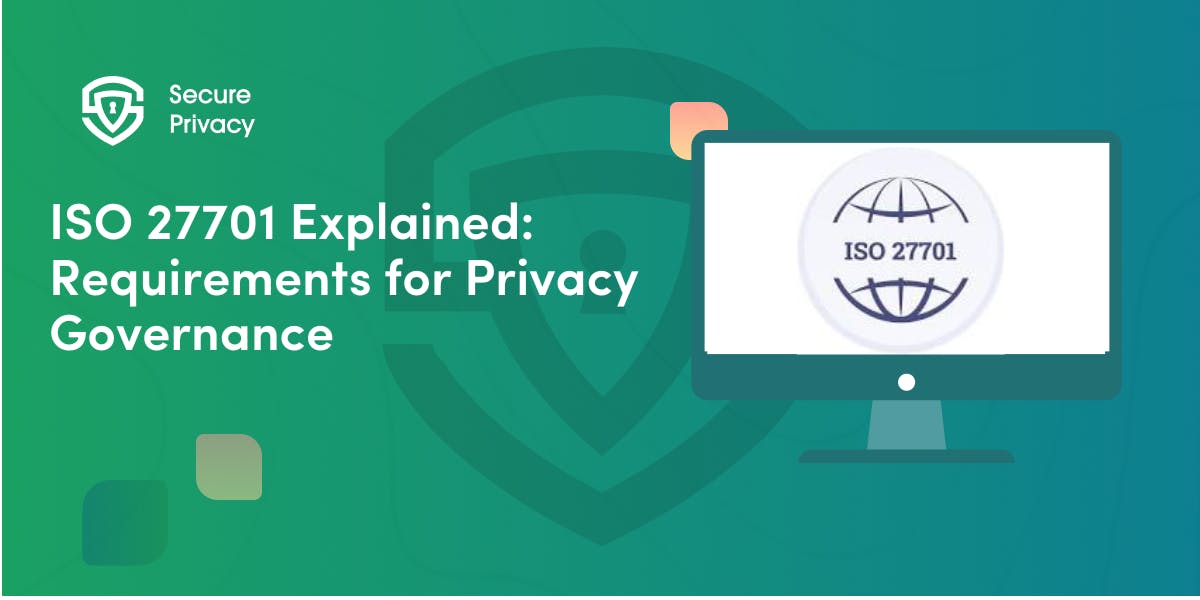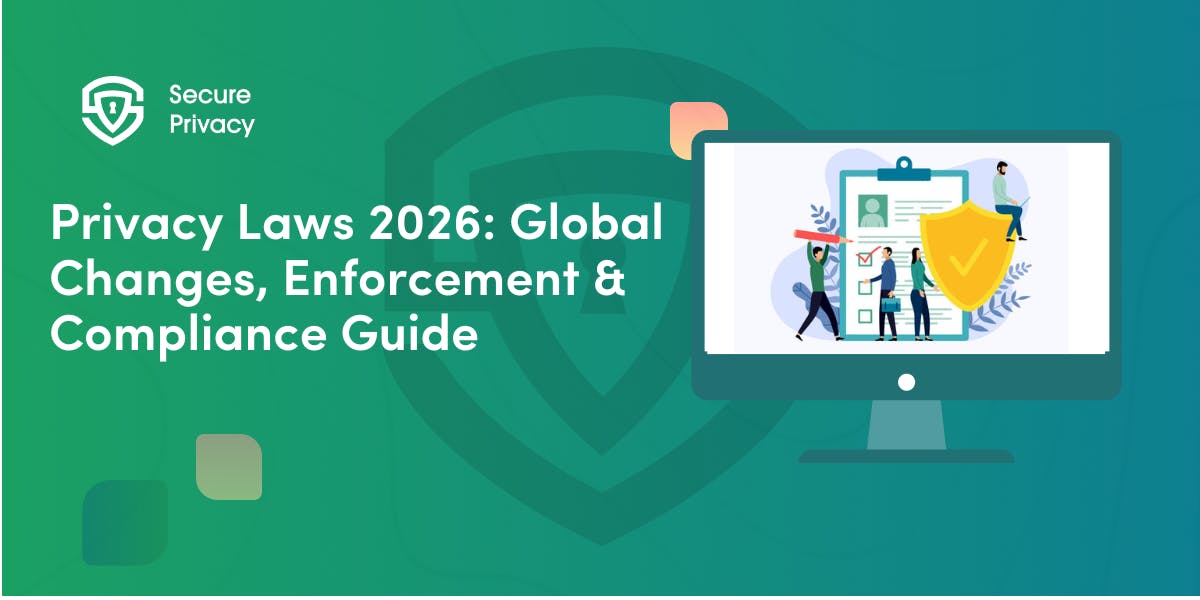Privacy by Design GDPR: Complete Implementation Guide for 2025
Your organization collects customer data, processes transactions, and operates digital services — then you discover your systems violate GDPR Article 25 because privacy wasn't built into the architecture from the start. Privacy by Design GDPR requirements transform this compliance crisis from a reactive firefighting exercise into a proactive framework, embedding data protection into every stage of product development before processing begins.
The stakes are massive: GDPR fines reached €5.88 billion cumulatively by January 2025, with individual penalties reaching €20 million or 4% of global annual revenue. Yet 97% of EU apps still deploy dark patterns violating these principles. If you're a data protection officer, product manager, or software architect responsible for GDPR compliance, you need implementation strategies that work across systems, products, and processes without requiring complete rebuilds.
In this guide, you'll discover how Privacy by Design GDPR Article 25 obligations eliminate reactive compliance approaches, why proactive privacy integration outperforms bolt-on solutions, and which technical measures separate genuinely effective implementations from compliance theater.

Prioritizing user privacy is essential. Secure Privacy's free Privacy by Design Checklist helps you integrate privacy considerations into your development and data management processes.
Understanding Privacy by Design GDPR Article 25
GDPR Article 25 establishes two complementary mandatory obligations for data controllers.
Article 25(1) – Data Protection by Design requires controllers to implement "appropriate technical and organisational measures" at both the time of determining the means for processing and during the processing itself. These measures must implement data protection principles from Article 5 GDPR. Critically, this requirement applies "taking into account the state of the art, the cost of implementation and the nature, scope, context and purposes of processing."
Article 25(2) – Data Protection by Default mandates that controllers implement measures ensuring "by default, only personal data which are necessary for each specific purpose of the processing are processed." This applies to data collection amount, processing extent, storage period, and accessibility.
Recital 78 recommends controllers adopt measures including minimizing personal data processing, pseudonymizing data as soon as possible, ensuring transparency regarding data functions, enabling data subjects to monitor processing, and enabling controllers to create security features.
Traditional approaches treated privacy as compliance layer added after development. Privacy by Design GDPR mandates privacy as foundational architecture from initial conception.
The Seven Foundational Principles
Privacy by Design GDPR implementation derives from seven principles originally developed by Dr. Ann Cavoukian, now legally operationalized within Article 25 frameworks.
Proactive Not Reactive represents the core mindset. This framework anticipates and prevents privacy-invasive events before they occur. This principle underpins the requirement for Data Protection Impact Assessments (DPIAs) before deploying new processing systems.
Privacy as the Default Setting directly operationalizes Article 25(2). Maximum privacy protection is automatically delivered without requiring user action. Default configurations reflect the most privacy-protective settings—users should not navigate complex preference centers to achieve baseline protection.
Privacy Embedded into Design weaves privacy into core architecture from inception. Organizations must design systems with privacy-protective defaults embedded into technical infrastructure and business processes.
Full Functionality demonstrates that These protections don't compromise system functionality or user experience. Organizations can maintain business objectives while respecting privacy through privacy-protective personalization approaches.
End-to-End Security ensures privacy protections span the entire data lifecycle, from collection through secure deletion. Organizations must ensure encryption at rest and in transit, role-based access controls, and scheduled data deletion per retention policies.
Visibility and Transparency maintains full transparency regarding data processing and operations. All processing remains accountable and auditable through documentation.
Respect for User Privacy prioritizes individual autonomy and user control. Article 21 (right to object), Article 17 (right to erasure), and Article 20 (data portability) must be technically implemented and accessible through clear interfaces.
Privacy by Design GDPR vs. Privacy by Default
While complementary, these are distinct obligations frequently conflated.
Privacy by Design GDPR focuses on integrating privacy into system architecture from initial conception. It's process-centric, addressing how systems are built. Examples include conducting DPIAs before launch, appointing DPO, implementing pseudonymization architecture, and designing privacy-protective data flows.
Privacy by Default focuses on configuring default settings to the most privacy-protective options without requiring user intervention. It's setting-centric, addressing how systems are configured. Examples include opt-in consent models, disabled data collection by default, and restricted third-party access by default.
The European Data Protection Board emphasizes that implementing Article 25 makes achieving Privacy by Default "much easier," and vice versa. They are complementary obligations under Article 25.
Learn how iOS and tvOS support privacy-by-design principles through native platform capabilities.
Technical and Organizational Measures
Privacy by Design GDPR Article 25 requires "appropriate technical and organisational measures" implementing data protection principles.
Data Minimization represents the cornerstone technical principle under Article 5(1)(c). Implementation requires collecting only personal data strictly necessary for specific stated purposes, limiting the extent of processing, reducing storage periods to minimum necessary, and restricting accessibility to authorized personnel.
A SaaS project management platform implemented data minimization by limiting trial account data collection to email and company name, automatically purging inactive trial data after 30 days, and using pseudonymized user IDs for analytics. Result: 40% faster trial signup and 100% GDPR compliance.
Pseudonymization is the central technical measure, explicitly referenced in Article 25(1), Recital 78, and Article 32(1)(a). GDPR Article 4(5) defines pseudonymization as "processing of personal data in such a manner that the personal data can no longer be attributed to a specific data subject without the use of additional information."
Technical implementation methods include encryption (AES-256 standard) with key kept separately, tokenization replacing sensitive data with non-sensitive tokens, and aggregation/masking combining data points preventing individual identification.
Privacy by Design GDPR benefits of pseudonymization include controllers avoiding mandatory breach notification for pseudonymized data, enabling secondary use for purposes beyond original collection, and demonstrating compliance with Article 25(1) technical safeguards. January 2025 EDPB Pseudonymization Guidelines clarify that pseudonymization is most effective when complemented by additional measures.
Encryption and Access Controls satisfy Article 32 security requirements. End-to-end encryption for data in transit (TLS 1.3 minimum), encryption for data at rest (AES-256 standard), role-based access controls, and multi-factor authentication represent baseline security measures.
Default Privacy Settings operationalize Article 25(2). Opt-in consent models where users must actively grant permission, disabled non-essential tracking by default, privacy-protective analytics collecting only aggregated data, and restricted third-party integrations represent default privacy configurations.
Data Protection Impact Assessments
DPIAs represent the primary tool for demonstrating Article 25 compliance, mandatory under Article 35 for high-risk processing.
When DPIA is Required: Large-scale processing of special categories, systematic monitoring of public areas, automated decision-making with legal effects, processing of vulnerable individuals' data, new technologies (AI, biometrics, IoT), data transfers outside EU/EEA, and systematic processing hindering data subjects' rights.
DPIA Process: Conduct assessment before processing begins, identify risks to data subjects' rights, assess existing or planned measures to mitigate risks, repeat assessment at least every 3 years, and consult the Supervisory Authority if residual high risks remain.
Practical DPIA Elements include project description, data processing activity mapping, legal basis assessment, necessity and proportionality analysis, data subject rights implementation plans, privacy risk identification matrix, and risk mitigation measures.
Organizations frequently mistake DPIAs as one-time exercises. Privacy by Design GDPR requires continuous DPIA review and updating as processing evolves. DPIAs must be living documents reflecting current processing realities.
Real-World Implementation Examples
SaaS: Automated Data Minimization – Limited trial data collection to email plus company name only, automatic purging after 30 days, pseudonymized user IDs for analytics. Results: 40% faster signup, 100% GDPR compliance, reduced breach exposure.
eCommerce: Privacy-First Personalization – Behavioral pattern analysis instead of personal identifiers, client-side personalization, anonymous customer cohorts for marketing insights. Results: Maintained conversion rates while reducing personal data processing by 60%.
Mobile Apps: Encryption and Progressive Permissions – Strong encryption (AES-256), requesting permissions only when features require them, clear privacy policies, transparent data sharing practices.
Consent Management Automation – Granular consent options for different communication types, automated consent renewal workflows, consent history tracking integrated into CRM. Results: Improved email engagement rates by 35% while ensuring full GDPR compliance.
Common Implementation Challenges
Cultural Resistance manifests when privacy viewed as compliance burden. Solutions include securing executive sponsorship, demonstrating privacy ROI through reduced breach costs, integrating privacy into existing workflows, and celebrating privacy wins.
Resource Constraints emerge from limited budget and 65% of professionals identifying skilled personnel shortage as critical barrier. Solutions include phased implementation, leveraging privacy automation tools, building internal expertise through training, and partnering with external specialists.
Balancing Privacy with Business Objectives creates tension. Solutions include designing privacy-protective personalization (behavioral patterns vs. personal identifiers), implementing privacy-enhancing technologies (differential privacy, federated learning), and using privacy as competitive differentiator.
Agile Development Conflicts occur when structured proactive approaches conflict with iterative methodologies. Solutions include integrating privacy checkpoints into sprint cycles, establishing privacy-focused definition of "done," conducting sprint-level DPIAs, and building privacy reviews into CI/CD pipelines.
Dark Patterns: The Privacy by Design GDPR Violation Crisis
Despite GDPR enforcement, 97% of EU apps still deploy dark patterns in 2024, representing systematic failures in implementation.
What Are Dark Patterns: Strategic design choices intentionally misleading, pressuring, or manipulating users into actions they might not otherwise choose (accepting all cookies, sharing excessive data, skipping privacy settings). Dark patterns prioritize business goals over user autonomy—direct violations of Privacy by Design GDPR principles.
Common Dark Patterns: "Accept All" asymmetry where decline buttons hidden versus vibrant "Accept" CTAs, emotional blackmail using guilt-inducing language for opt-out options, and infinite scroll consent walls with endless navigation to reject cookies. (These design mistakes become compounded when implemented on connected TV platforms like Android TV, where screen limitations and interaction models make dark pattern compliance particularly difficult.)
GDPR Violation Framework: Dark patterns violate Article 5(1)(a) fair treatment through misleading design, Article 25(1) through intentionally circumventing privacy through manipulative interfaces, Article 7 where consent obtained through dark patterns cannot be "freely given," and Article 12-14 transparency where manipulative design obfuscates communication.
The European Data Protection Board states that user interfaces featuring dark patterns result in "unfair" processing, violating fundamental Privacy by Design GDPR principles. Average FTC penalty for dark pattern violations reached $14.8 million in 2024, while 83% of users abandon brands using manipulative consent interfaces.
Privacy by Design GDPR Enforcement Cases
Meta Platforms – €1.2 Billion (May 2023) for international data transfer violations. Privacy by Design GDPR failure: Meta failed to implement measures ensuring lawful cross-border transfers despite known legal risks.
Amazon – €746 Million (July 2021) for consent and transparency violations. Privacy by Design GDPR failure: Lacked transparent consent mechanisms, failed to implement Privacy by Default through consent-first design.
Sambla Group – €950,000 (2025) for Article 25 violations specifically. Privacy by Design GDPR failure: Missing data protection measures from system outset, delayed response to unsafe processes, multi-year duration of unresolved deficiencies. Fine justified by severity of Privacy by Design GDPR infringement and lack of organizational initiative to remediate.
Demonstrating Compliance
Controllers must demonstrate effective Privacy by Design GDPR implementation, not merely claim it.
Documentation Requirements: Records of Processing Activities (ROPA) under Article 30 documenting technical and organizational security measures. Data Protection Impact Assessment (DPIA) under Article 35 documenting processing description, identified privacy risks, mitigation measures, and review schedules.
Implementation Evidence: Key Performance Indicators (KPIs) measuring safeguard effectiveness, training records showing privacy competency development, audit reports validating technical measure implementation, design documentation explaining privacy-protective choices, and vendor assessments confirming processor compliance.
Article 42 GDPR enables use of approved certifications as compliance evidence. Organizations pursuing certification demonstrate commitment to comprehensive frameworks validated by independent third parties.
Emerging Technologies
Privacy by Design GDPR requirements extend to cutting-edge technologies.
AI and Large Language Models face unique challenges as EU AI Act enters enforcement. Challenge: LLMs trained on extensive datasets including personal data where right to deletion conflicts with ML model retraining. Solution: Adaptive PII mitigation systems, privacy-preserving training techniques (federated learning, differential privacy), and transparent data lineage documentation.
IoT and Connected Devices require data minimization by design, pseudonymization at data collection point, and encrypted transmission protocols. Connected devices processing continuous data streams must implement granular consent mechanisms.
Biometric Processing involves special category data (Article 9) requiring enhanced obligations. Use limitations by design, right to erasure for biometric templates, and explicit consent workflows represent mandatory technical measures.
Global Comparative Analysis
CCPA/CPRA (California) requires "reasonable security measures" but framework is consent-driven versus legal basis-driven like Privacy by Design GDPR. CPRA explicitly prohibits dark patterns with 2025 amendments strengthening emotional manipulation bans. Key difference: GDPR is prescriptive (mandatory), while CCPA/CPRA are principles-based (implementation flexibility greater).
LGPD (Brazil) is heavily modeled on EU's GDPR with data subject rights, controller obligations, legal basis for processing, DPIAs, and mandatory DPO for certain entities. While LGPD doesn't use exact "Privacy by Design GDPR" terminology, Article 18 data subject rights and security obligations operationalize these principles.
Global Trend: Privacy by Design GDPR becoming global standard across EU, North America, Brazil, and beyond. Organizations processing global users' data must implement Privacy by Design GDPR regardless of single-jurisdiction enforcement.
Conclusion
Privacy by Design GDPR under Article 25 represents a paradigm shift from privacy-as-compliance-afterthought to privacy-as-foundational-architecture. The seven foundational principles—proactive prevention, privacy defaults, embedded design, functionality, end-to-end security, transparency, and user-centricity—create comprehensive framework for organizations to build privacy protection into products and services from inception.
As enforcement accelerates with €5.88 billion in GDPR fines by 2025 and 97% of EU apps still violating through dark patterns, the business case for Privacy by Design GDPR strengthens. Organizations implementing robust Privacy by Design GDPR demonstrate competitive differentiation, customer trust, regulatory resilience, and reduced breach exposure.
For data protection officers, product managers, and software architects, Privacy by Design GDPR is no longer discretionary. The convergence of GDPR, CCPA/CPRA, LGPD, EU AI Act, and emerging global frameworks confirms that privacy-protective-by-design is the baseline expectation—not a premium feature.
Organizations recognizing Privacy by Design GDPR as strategic capability rather than compliance burden achieve better outcomes. Higher consent acceptance rates improve data quality. Better attribution enables more effective marketing. Compliance confidence supports business expansion into regulated markets.
Ready to implement Privacy by Design GDPR Article 25 in your organization? Explore technical and organizational measures that embed privacy into system architecture from initial conception, scale across products automatically, and transform compliance from reactive firefighting into proactive framework through Privacy by Design GDPR implementation.
Get Started For Free with the
#1 Cookie Consent Platform.
No credit card required

The SaaS DPA Guide: GDPR Requirements, Subprocessors, and Automation
Your enterprise deal stalled in legal review for three weeks while procurement demands a comprehensive data processing agreement, your legal team scrambles to understand GDPR requirements, and your sales team watches the quarter-end deadline approach with increasing anxiety.
- Legal & News
- Data Protection

ISO 27701 Explained: Requirements for Privacy Governance
Privacy teams face mounting pressure. Regulators demand proof of systematic data protection. Customers expect transparency. Board members want assurance that privacy risks won't derail operations.

Privacy Laws 2026: Global Changes, Enforcement & Compliance Guide
Privacy regulations multiply faster than compliance teams can track them. Three new U.S. state laws take effect. The EU AI Act reaches full enforcement. India's DPDP Act enters its critical phase.
